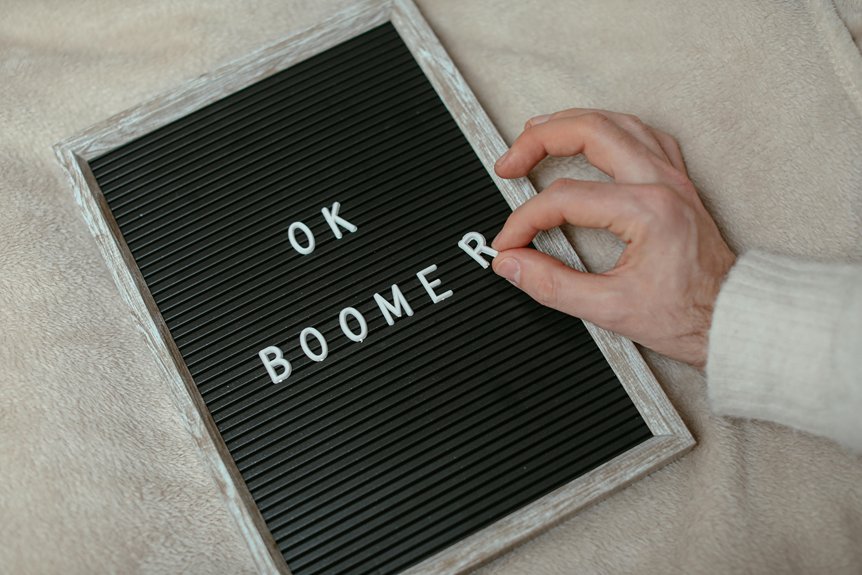
If you want to enhance your Spanish skills, knowing some key slang words is essential. These terms can help you connect better with native speakers and navigate casual conversations more smoothly. Ever wondered what “chevere” really means or how to use “güey” in a friendly chat? Let’s explore these expressions and discover how they can add flavor to your interactions. You might just find a few surprises along the way.
Chevere: The Cool Factor
When you hear someone say “chevere,” you instantly feel the vibe of excitement and positivity. This popular slang, rooted in places like Venezuela, Puerto Rico, and Colombia, means “cool” or “great.”
You can use it to describe anything positive—a person, an experience, or even an idea. Imagine someone shares a thrilling plan; responding with “chevere” shows your enthusiasm and approval.
Incorporating “chevere” into your conversations not only spices up your Spanish but also deepens your connection with native speakers. It reflects cultural nuances, offering a glimpse into the vibrant dialects of Spanish-speaking communities.
Embrace this term, and let it enhance your interactions, making them as lively and freeing as you desire.
Güey: A Casual Term for Friends
“Güey” is a quintessential Mexican slang term that embodies the essence of friendship and familiarity. It translates to “dude” or “guy,” and you can use it casually among friends or acquaintances.
This versatile term works in both spoken and written Spanish, making it perfect for informal chats. You’ll find that “güey” fits seamlessly into conversations with anyone, regardless of gender, showcasing a sense of camaraderie.
However, steer clear of using it in formal situations, as it might come off as disrespectful. Depending on where you’re in Mexico, the term’s popularity can vary, reflecting the rich diversity of the country’s slang.
Embrace “güey” in your casual interactions, and you’ll sound effortlessly cool!
Pana: Your Close Companion
If you’re looking for another way to refer to your close friends, “pana” is a fantastic choice. Common in Caribbean Spanish-speaking countries, this slang term highlights the bond you share with your buddies.
Derived from “pan,” meaning bread, it suggests that friends are just as essential in life. When you greet someone with “¿Qué tal, pana?” you’re not just saying “what’s up, buddy?”—you’re expressing familiarity and trust.
Using “pana” in your conversations makes interactions feel more relaxed and relatable, reinforcing those social ties that keep friendships strong.
Jato: Home Sweet Home
“Jato” is a warm and inviting term that captures the essence of home in many Spanish-speaking cultures, especially in Peru. When you use “jato,” you’re not just referring to a physical space; you’re expressing comfort and familiarity, much like saying “home sweet home.”
This colloquial term, derived from the Quechua word “hatun,” means “big” or “large,” but it’s evolved to represent your personal sanctuary. You’ll find this term popping up in casual conversations with friends, making it a staple in everyday Spanish slang.
Bacán: Something Awesome
After settling into your jato, you might find yourself wanting to express just how awesome your experiences are. That’s where “bacán” comes in!
Used mainly in Chile and Peru, this slang term perfectly captures that feeling of excitement or approval. Whether you’re raving about a breathtaking view, an unforgettable meal, or a remarkable person, calling it bacán shows you appreciate it fully.
It’s like saying “cool” or “great,” but with a local twist. You can even say “bacanes” when talking about a group of impressive people or things.
Just remember, slang varies by region, so be aware of how it’s used around you. Embrace the freedom of expression and let “bacán” be part of your vocabulary!
Chamba: Work or Job
Finding a job can be a challenging task, but in casual conversations, you might hear the term “chamba” pop up frequently. This slang term, popular in Mexico and Central America, refers to work or a job and is commonly used among young people and workers.
You’ll often find it in informal discussions, making it a great way to sound more natural and relatable. Notably, “chamba” may also imply temporary or less formal positions, so keep that in mind.
Its roots trace back to the Quechua word for work, highlighting the influence of indigenous languages on modern Spanish. Using “chamba” in your vocabulary can help you connect better with native speakers in everyday settings.
Lana: Money or Cash
When you’re chatting with friends in Mexico or other Spanish-speaking countries, you might hear the term “lana” tossed around to refer to money or cash. This popular slang, especially among younger folks, has its roots in the Spanish word for wool, which historically held value in trade.
You’ll often hear phrases like “No tengo lana” (I don’t have any money) or “Me prestas lana?” (Can you lend me some cash?). Using “lana” can help you connect better in informal conversations and enhance your everyday Spanish.
Pisto: Alcohol or Booze
Just as “lana” brings a casual flair to conversations about money, “pisto” adds a lively touch when discussing drinks. This popular slang term, especially in Central America, is your go-to for referring to alcohol or booze.
Whether you’re in a lively bar in Guatemala or enjoying a night out in El Salvador, you’ll hear friends tossing around “pisto” while they raise their glasses. Curiously, the term also hints at money, often linked to covering drink tabs.
Derived from “pistol,” it carries a sense of bravado that fits perfectly with the nightlife vibe. Mastering “pisto” not only spices up your Spanish but also helps you connect with locals, enriching your cultural experience. Cheers!
Mola: Something That’s Really Great
“Mola” is a vibrant expression you’ll want to add to your Spanish vocabulary. This popular slang term, mainly used in Spain, captures excitement or admiration, akin to saying something is “cool” or “awesome.”
You can easily sprinkle it into casual conversations with friends, making it a fantastic informal addition. For example, if you agree with an idea, just say, “¡Eso mola!” or when enjoying a lively party, exclaim, “La fiesta mola mucho!”
Originating from the verb “molar,” which means to be appealing, it emphasizes positive vibes. Using “mola” not only boosts your fluency but also connects you to the lively spirit of Spanish social culture, letting you express your enthusiasm freely and effortlessly.
Conclusion
Now that you’re armed with these essential Spanish slang words, you’re ready to elevate your conversations and connect with Spanish speakers on a deeper level. Whether you’re chatting with friends or exploring new cultures, using terms like “chevere” and “pana” will make you sound more natural and relatable. Don’t hesitate to sprinkle these expressions into your daily interactions—you’ll not only impress others but also enjoy the richness of the language!



